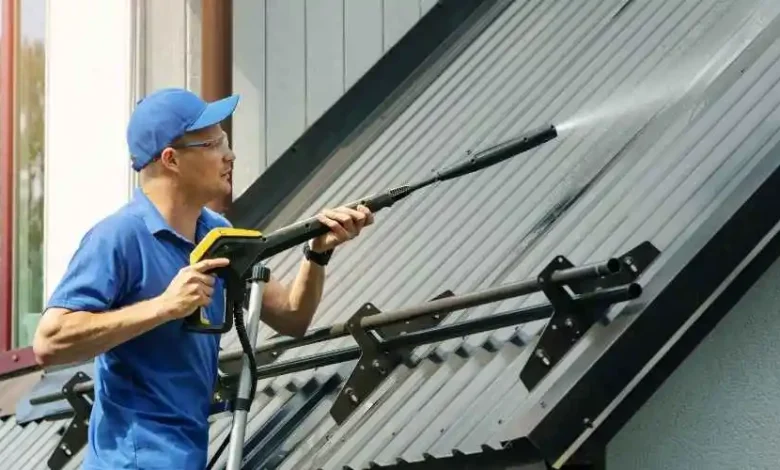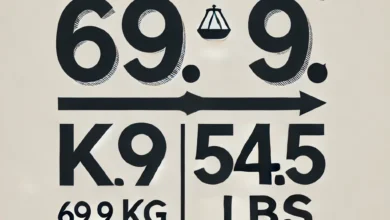The Development of the Roof Cleaning Industry: Key Trends, Changes, and Equipment

The roof cleaning industry has evolved significantly over the last few decades, driven by a growing awareness of the importance of regular roof maintenance and the development of more efficient, specialized cleaning techniques. As roofs are subject to exposure to weather elements, pollutants, and biological growth such as algae, moss, and lichen, keeping them clean is essential for preserving their lifespan, enhancing curb appeal, and improving overall property value. In this article, we will explore the key trends and changes in the roof cleaning industry, as well as the advancements in equipment that have transformed the way roofs are cleaned today.
The Early Days of Roof Cleaning
Historically, roof cleaning was a task left to homeowners who might use harsh scrubbing techniques or chemical cleaners in an attempt to remove dirt, moss, and other debris. The process often involved climbing ladders and manually scrubbing the roof with a broom or wire brush, which was both time-consuming and potentially dangerous. High-pressure washing, while popular for cleaning other exterior surfaces, was not always ideal for roofs, as it could lead to damage, especially on delicate materials like asphalt shingles or clay tiles.
Roof cleaning was often neglected, with many property owners unaware of the long-term consequences of not maintaining a clean roof. Over time, however, people began to realize that biological growth, such as algae and moss, could damage roofing materials by promoting rot, blocking water runoff, and contributing to leaks. This awareness sparked a shift toward more professional roof cleaning services and the development of gentler, more effective cleaning methods.
Key Trends in the Roof Cleaning Industry
- Shift Toward Soft Washing
One of the most significant trends in the roof cleaning industry is the move away from traditional high-pressure washing toward a technique known as “soft washing.” Soft washing uses low-pressure water combined with specialized, eco-friendly cleaning solutions to safely remove dirt, algae, moss, and other contaminants from roof surfaces. This technique is less likely to cause damage compared to high-pressure washing, which can strip away shingles, erode mortar joints, or force water under roofing materials.
- Eco-Friendly Cleaning Solutions
As environmental consciousness increases, many roof cleaning companies have turned to eco-friendly cleaning solutions. Traditional cleaning chemicals used in pressure washing can often be toxic to plants, animals, and nearby water sources. In response, the roof cleaning industry has adopted biodegradable and non-toxic cleaning agents that are safer for the environment.
- Technological Advancements
The Edinburgh roof cleaning industry in particular, has seen the integration of various technologies that have improved both the safety and effectiveness of cleaning services. GPS tracking systems and scheduling software are now commonly used by roof cleaning companies to streamline their operations and improve customer service. These technologies allow companies to manage appointments, track job progress, and ensure that clients are satisfied with the results.
Advancements in equipment have also played a key role in improving the efficiency and safety of roof cleaning. Modern soft washing systems are equipped with pressure regulation tools that allow cleaning technicians to adjust the water pressure according to the specific needs of the roof being cleaned. This precision ensures that the cleaning process is gentle enough to avoid damage while still delivering effective results.
- Specialization in Roof Types and Materials
The roof cleaning industry has also seen a shift toward specialization as more companies tailor their services to specific types of roofing materials. Different roofing materials—such as asphalt shingles, slate, tile, or metal—require different cleaning techniques and products. As the industry has evolved, roof cleaning companies have become more knowledgeable about these materials and the best ways to clean them without causing damage.
For instance, some materials, like asphalt shingles, are particularly sensitive to high-pressure washing, which can lift the granules from the shingles, leading to accelerated wear and tear. On the other hand, tile roofs may require a gentler cleaning method to preserve their glaze and prevent cracking. By understanding the nuances of various roofing materials, companies can provide more effective, customized cleaning solutions to meet the needs of different customers.
- Preventative Maintenance Services
A growing trend in the roof cleaning industry is the increased demand for preventative maintenance services. Many property owners are now choosing to invest in regular roof cleaning services to prevent the buildup of algae, moss, and debris from the start, rather than waiting until the roof becomes visibly dirty or damaged. Regular roof cleaning helps to maintain the roof’s functionality, prevents organic growth, and ensures that gutters and drains remain clear of debris.
Preventative roof cleaning is especially important for commercial buildings, rental properties, and homes located in areas prone to heavy rainfall or humidity. Regular cleaning reduces the need for costly repairs or roof replacements down the line and helps to preserve the aesthetic value of the property. As property owners become more proactive about maintenance, the demand for routine roof cleaning services is expected to continue to grow.
Key Changes in the Roof Cleaning Industry
- Increased Professionalism and Standards
As the roof cleaning industry has matured, there has been an increase in professionalism and standardization. More roof cleaning companies are now offering warranties on their services, which ensures that the roof remains clean for a specified period after cleaning. In addition, many companies are offering certifications for their technicians to verify their training and expertise.
Moreover, regulatory standards have been implemented to ensure that roof cleaning is performed safely and with the proper knowledge of chemicals and equipment. These standards are helping to elevate the professionalism of the industry and improve safety for both technicians and homeowners.
- Education and Awareness
With the growing popularity of soft washing and the benefits of roof cleaning, there has been a concerted effort within the industry to educate both consumers and professionals. Homeowners are increasingly aware of the value of roof cleaning and the long-term benefits it offers in terms of roof longevity, curb appeal, and energy efficiency. Roofing professionals, on the other hand, are continually updating their knowledge and skills to stay ahead of industry trends and provide the best services to their customers.
Advances in Roof Cleaning Equipment
The evolution of roof cleaning equipment has significantly contributed to the efficiency, safety, and effectiveness of roof cleaning methods. Some of the most notable advancements in roof cleaning equipment include:
- Soft Washing Systems
Soft washing systems are among the most important innovations in roof cleaning. These systems combine low-pressure pumps with specialized nozzles to apply cleaning solutions evenly across the roof. The use of adjustable pressure settings ensures that technicians can tailor the cleaning process to the needs of different roofing materials. Modern soft washing systems are designed to be user-friendly, lightweight, and capable of covering large roof areas efficiently. - Safety Equipment
Given the dangers involved in working at heights, the roof cleaning industry has seen significant improvements in safety equipment. Harnesses, fall protection gear, and scaffolding are now standard safety measures for technicians working on steep or tall roofs. In addition, the development of lightweight, portable equipment has made it easier for technicians to transport and use roof cleaning tools while minimizing the risk of accidents. - Eco-Friendly Cleaning Products
In parallel with the advancement of cleaning methods, roof cleaning companies are adopting more eco-friendly cleaning products. These biodegradable solutions are specially formulated to break down organic matter like algae, moss, and lichen without harming the environment. Many of these products are also designed to prevent future growth, extending the period between cleanings and providing added value to customers.



